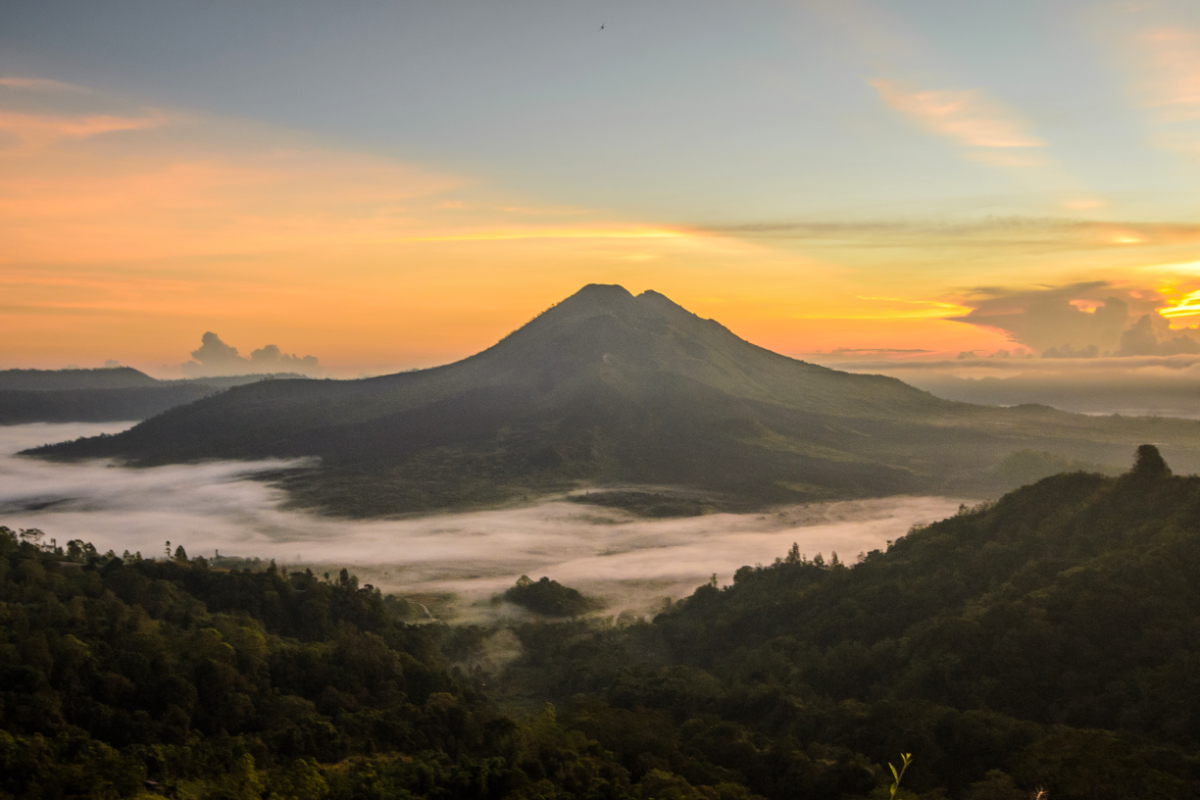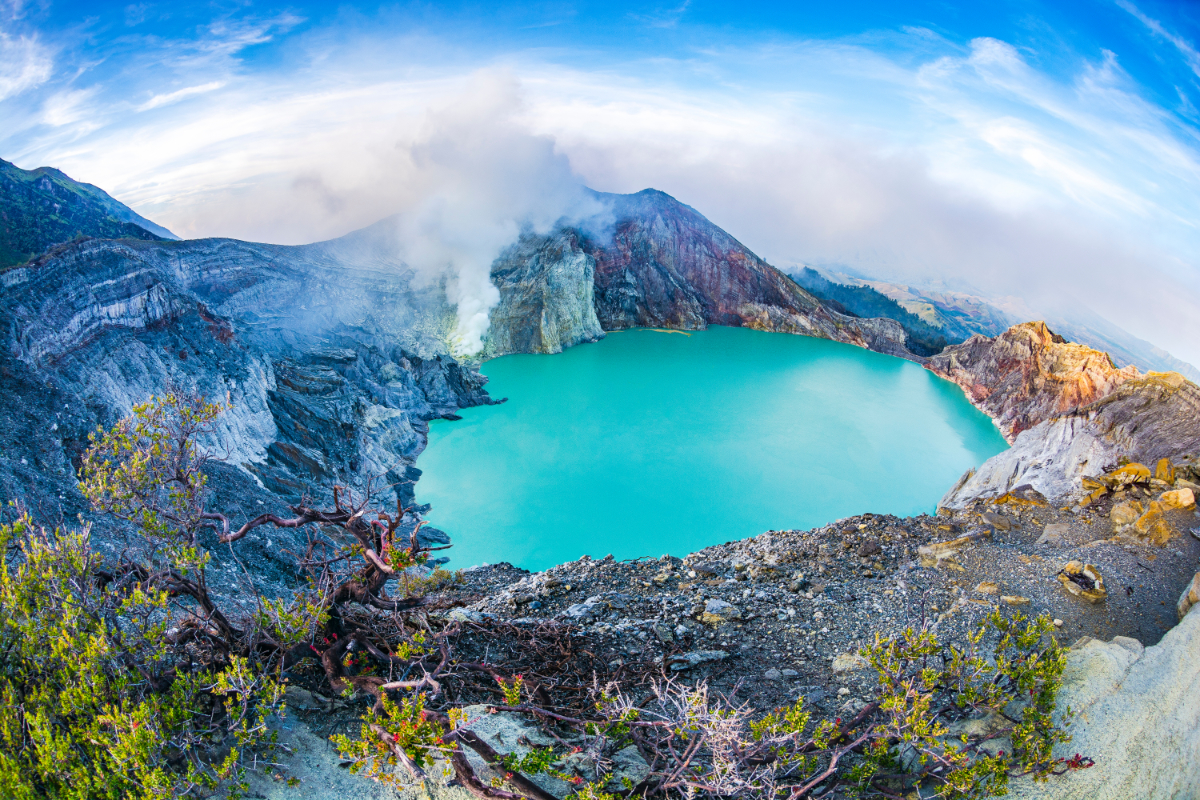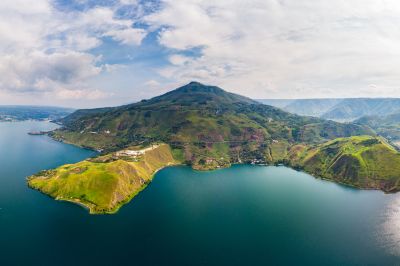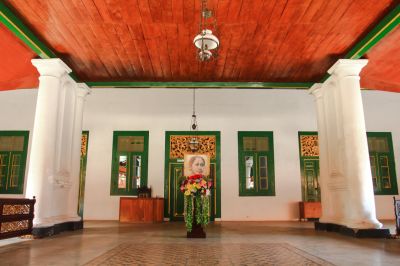
10 World-famous UNESCO Global Geoparks in Indonesia

The Ministry of Tourism and Creative Economy/Tourism and Creative Economy Agency (Kemenparekraf/Baparekraf) strives to realize sustainable tourism in Indonesia. One of the many efforts to create sustainable tourism is to develop Indonesia's geopark tourism potential.
Geoparks are areas with high-value geological elements, usually equipped with very well-developed biodiversity and cultural diversity. Geopark tourism in Indonesia can provide many benefits for the tourism sector since it can encourage educational, natural, and cultural tourism in a tourist destination.
Currently, ten worldwide-known geoparks in Indonesia are included in the UNESCO Global Geopark (UGG) ranks. Establishing these geoparks can strengthen the tourism sector in Indonesia by making them more widely known and successful in attracting tourists.
Here are ten geoparks in Indonesia that have successfully entered the ranks of UNESCO Global Geoparks:
Batur Geopark
As Indonesia's first geopark to be included in the UNESCO Global Geopark (2012), Batur Geopark has extraordinary tourism potential. One of the attractions of this geopark in Bangli Regency, Bali, is the natural beauty formed naturally from the traces of the eruption of Mount Batur.
The Batur Geopark's most attractive natural beauty is the giant caldera, one of the world's largest and most beautiful calderas. This geopark in Bali also has a 7.5-kilometer crescent-shaped lake, which adds to its uniqueness.
Gunung Sewu Geopark
Gunung Sewu Geopark was included in the UNESCO Global Geopark in 2015. This geopark area stretches across three districts: Gunung Kidul, Wonogiri, and Pacitan. The selection of Gunung Sewu Geopark closely links to the archaeological wealth of ancient human cultural heritage.
Apart from having many paleolithic-neolithic cultural remains, Gunung Sewu Geopark offers a beautiful panorama of the karst area. Having around 40.000 karst hills, it is unsurprising that the Gunung Sewu Geopark is one of the most extended karst areas on the island of Java.
Mt Rinjani Geopark
Stretching across Mataram City, West Lombok Regency, North Lombok Regency, and East Lombok Regency, Mt Rinjani Geopark is also one of the exciting geoparks in Indonesia. This geopark, successfully included in UNESCO in 2018, offers a beautiful combination of biodiversity, geological, and cultural diversity. Moreover, Mt Rinjani Geopark has a diversity of flora and fauna with endemic status, such as orchids (Vanda Limbata), Celepuk Rinjani, Flores Eagle, and many more.
Ciletuh Geopark
West Java also has a UNESCO-recognized geopark, Ciletuh Geopark. This 126,000-hectare geopark has beautiful views and is surrounded by alluvial expanses with unique rocks. Interestingly, the Ciletuh Geopark area is surrounded by various tourist destinations. These include Cimaja Beach, famous for its challenging waves and a popular destination for surfers worldwide, Awang Waterfall, Taman Purba, and many more.
Lake Toba Geopark
No less popular, Lake Toba Geopark is one of the geoparks in Indonesia that has gone global. Formed from the eruption of Mt. Toba tens of thousands of years ago, it has succeeded in creating extraordinary natural landscapes and tourism potential. Thanks to its natural beauty, it makes sense that one of the Super Priority Tourism Destinations (DPSP) regularly hosts international events. Most recently, it hosted the 2024 Lake Toba F1 Powerboat.
 Photo: The beauty of Geopark Ijen, which has the world's most acidic lake (Shutterstock/chris piason)
Photo: The beauty of Geopark Ijen, which has the world's most acidic lake (Shutterstock/chris piason)
Ijen Geopark
Administratively located in Banyuwangi Regency and Bondowoso Regency, East Java, Ijen Geopark has also been successfully included in the UNESCO Global Geopark list. The attraction of the Ijen Geopark is not just its geological and cultural uniqueness but also its natural phenomenon of blue fire in the Mt Ijen area, which has become global. Apart from that, the Ijen Geopark is a habitat for 14 types of flora, 27 types of fauna, and six types of mammals. Amazingly, Ijen Geopark has the most acidic lake in the world!
Belitung Geopark
Belitung Geopark is a list of Indonesian geoparks that are world-famous and recognized by UNESCO. This geopark has been designated as a Global Geopark because of its unique combination of geological, cultural, biological, and geographical diversity in “Laskar Pelangi Country”. The Belitung Geopark has high-value geological heritage, such as the geomorphological appearance of aquatic granite rocks, remains of ancient underwater volcanoes, the discovery of the most extensive tin mineral in Southeast Asia, as well as Meteorites (Tektites/Satam), which are scattered in the alluvial quaternary zone.
Maros Pangkep Geopark
The Maros Pangkep Geopark, included in the UNESCO Global Geopark in 2023, has extraordinary natural potential. This geopark in South Sulawesi has a world-class landscape with tower karst types composed of piles of distinctive limestone rocks. Besides having a world-class karst landscape, the Maros Pangkep Geopark is the second largest karst area in the world after South China. Interestingly, in this geopark, there are also hundreds of caves where prehistoric humans lived.
Merangin Jambi Geopark
Another world-famous Indonesian geopark is Merangin Jambi Geopark. Plant fossils in some rocks, thought to have existed hundreds of millions of years ago, make this geopark attractive. Moreover, the geopark is the best rafting location in Indonesia. You can raft the Batang Merangin River and see flora fossils in several spots.
Raja Ampat Geopark
Raja Ampat Geopark has been included in the UNESCO Global Geopark. This geopark is known as "The Emerald Karst on the Equator" due to the karst cluster located on the equator. The diversity of the marine ecosystem in Raja Ampat has become an added value for this geopark. To this day, the Raja Ampat Geopark is still a habitat for various types of endemic animals and plants that cannot be found anywhere else!
Cover: Mount Batur Geopark in Bali (Shutterstock/Rafael Danendra Garuda)

Related News







